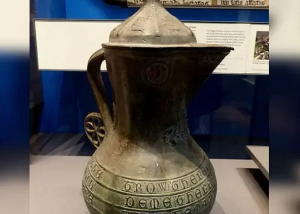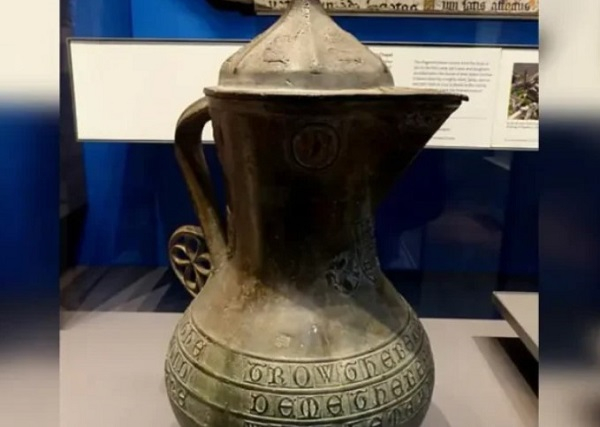 A picture of the artifact called Asante Ewer
A picture of the artifact called Asante Ewer
The British Museum has launched “The Asante Ewer,” a new publication in its Object in Focus series, which meticulously unpacks the history of a single, fascinating vessel and its complex 600-year journey from medieval England to the royal court of the Asantehene in West Africa, and finally back to the British Museum.
According to a myjoyonline.com report on October 25, 2025, the book published in collaborative distribution with Barnes & Noble, the 72-page book, featuring over 40 illustrations, is the result of a partnership between two British Museum curators and a Ghanaian historian.
It received research grants from the British Academy and the Wolfson Foundation.
Is the Ashanti Region different from Asanteman? – Obiri Boahen provides historical education
From English Royalty to the Asante Palace
The publication draws on extensive archival and new research to illuminate the history of the jug, popularly known as the Asante Ewer.
Its remarkable details include the royal arms of England, confirming its origin in 14th-century medieval England and marking it as one of the finest examples of late medieval English bronze casting.
The ewer was transported to West Africa, possibly between the fifteenth and seventeenth centuries, and by the nineteenth century, it had found a prominent place in a courtyard associated with the royal palace of the Asantehene in Kumasi.
The publication explores the commodity exchange dimension that might have brought the jug to Kumasi, possibly via the Caravan Trade from the Sahel, Moors in North Africa, or through the coastal trade routes from places like Cape Coast, a theory explored in Jack Goody’s Metals, Culture and Capitalism.
Emptiness in my heart and Asanteman’s soul – Otumfuo’s tribute to Asantehemaa
Looting and Re-evaluation
The book directly addresses the ewer’s controversial acquisition by the British Museum.
It details that during the widespread looting by British forces in the aftermath of the Fourth Anglo-Asante War of 1896, the ewer was removed from the royal building just before the British set the palace on fire.
It was subsequently purchased by the British Museum in 1896.
This new publication also addresses 19th-century collecting practices and their “inextricable links with colonialism.”
It explores how the ewer has historically been presented in a European context and is now being re-evaluated to fully include its African history and significance.
The book captures in detail the vessel’s importance in both contexts, from its intricate medieval symbolism linked to English royalty to its potential connections with the gold and ivory trade across the Sahara and the West African coast.
Backgrounds of the three authors
Two English staff of The British Museum and a Ghanaian historian give the book an agreeable condor.
The lead, Lloyd de Beer, a PhD in English from the University of East Angelia, is a curator with responsibility for the late medieval collection. A researcher in art and architecture of the Middle Ages, he has worked on the alabaster sculptures of medieval England after the English Reformation. De Beer curated the 850th martyrdom anniversary exhibition and lecture on, Thomas Becket: Murder and the Making of a Saint (2021).
Julie Hudson is a well-known English curator in many African museums where she has curated major exhibitions. She works in the Department of Africa, Oceania and the Americas, and among her particular areas of interest are the textiles of Tunisia. She co-authored with Chris Spring, Silk of Africa (2002). An Egyptologist, she studied at the University of Liverpool and Cambridge University.
The third is Director of the Manhyia Palace Museum, Ivor Agyeman-Duah, co-editor with the late Peggy Appiah and world leading philosopher, Kwame Anthony Appiah of, Bu Me Be: Proverbs of the Akans; of essays on art and the evolution of currency notes in Ghana as well as architectural history. He is the winner of several international awards including ‘The Distinguished Friend of Oxford 2012’ at Oxford University.
VPO/EB
US Embassy official allegedly pickpocketed at ShattaFest
